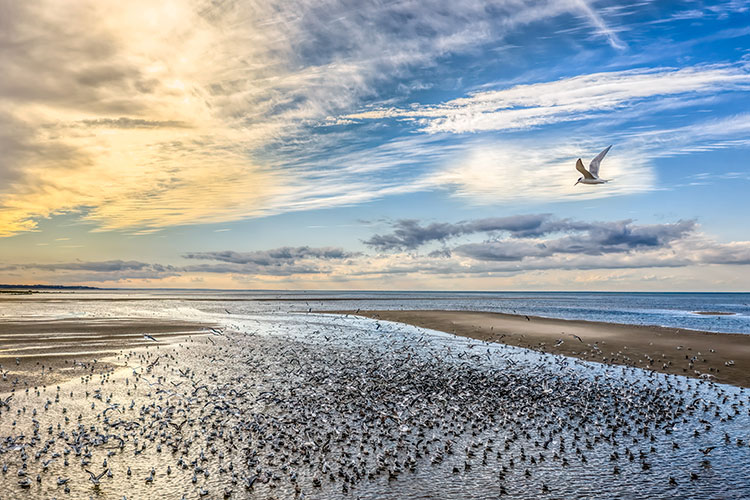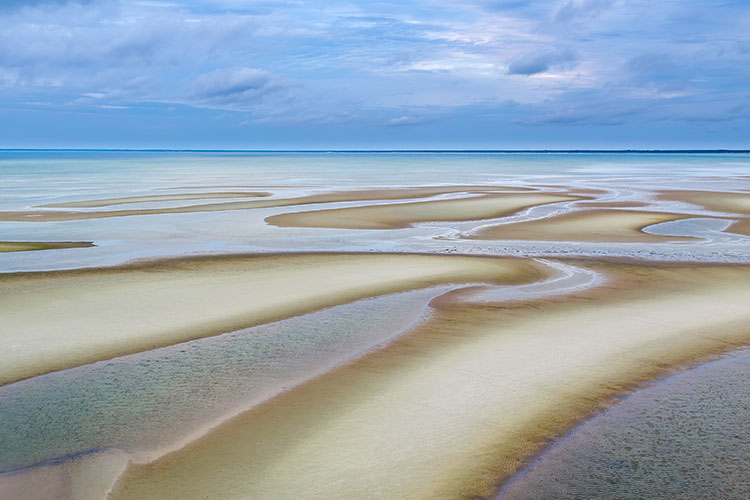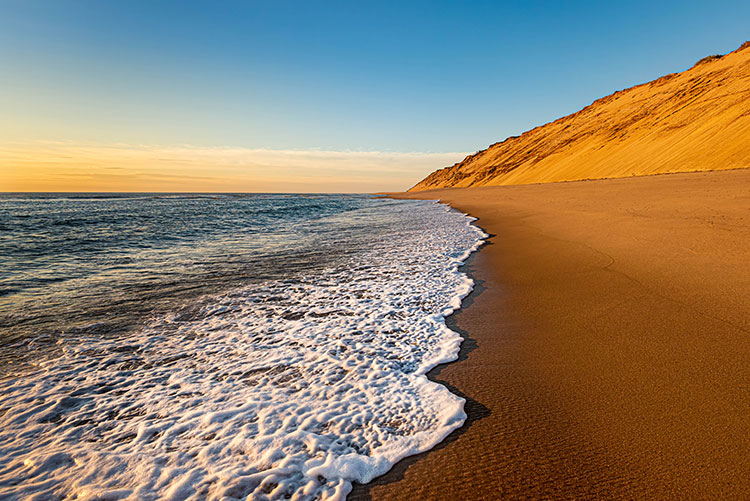
To Preserve and Protect
Cape Cod Life / August 2021 / Nature
Writer: Brenna Collins / Photographer: Steven Koppel
To Preserve and Protect

Cape Cod Life / August 2021 / Nature
Writer: Brenna Collins / Photographer: Steven Koppel
The Association to Preserve Cape Cod is ensuring the Cape will thrive for generations to come by saving our most precious resource: the water.

Across our incredibly captivating shoreline, the waves roar in from the Atlantic while the tide rises and falls to reveal infinite stretches of sand on the bayside. This small yet mighty slice of paradise has attracted artists and intellectuals for centuries. Henry David Thoreau’s Cape Cod chronicled his wonder at this region in the 1850s. As Thoreau predicted in his book, “The time must come when this coast will be a place of resort for those New-Englanders who really wish to visit the sea-side… But this shore will never be more attractive than it is now.” As the tourists arrived a century later, confirming Thoreau’s prediction, President John F. Kennedy authorized the establishment of the Cape Cod National Seashore, protecting over 43,000 acres of land in 1961. Just a few years later, in 1968, the Association to Preserve Cape Cod (APCC) was founded by a group of passionate individuals amidst a nationwide environmental movement.
Today, APCC is a robust nonprofit working across all 15 towns on the Cape as our environment’s caretaker and advocate. For the past four years, Andrew Gottlieb has served as Executive Director of APCC. Gottlieb brings with him years of expertise in environmental protection work with the Commonwealth of Massachusetts, where he served in a variety of policy positions. With a small staff of skilled and experienced professionals and dedicated volunteers, APCC has made incredible strides in restoring the Cape’s natural habitats.

Steven Koppel, APCC Board Member and esteemed photographer, captures this region’s extraordinary essence through his lens. In his newly opened Expressions Gallery on Main Street in Chatham, his stunning work is displayed. Koppel donates a portion of his profits to APCC, and is passionate about bringing awareness to the organization through his gallery. “I think awareness is so important here. I’m just doing my own part. As visitors enter the gallery, I share about APCC. These are often Cape residents who are here because this is where they want to live the rest of their lives,” Koppel shares.
For many, this past year was a reminder of the importance of connecting with the wild. As our normal routines came to a halt, many sought out the Cape’s coastline for refuge. Behind the scenes, or rather beneath the surface, it is a complex and delicate dance to keep this ecosystem thriving. When one facet is in disarray, the entire dance is off balance.

For the APCC, a central environmental concern is the rapidly declining health of the Cape’s surface waters and their watersheds. In 2019, APCC conducted a comprehensive study, to be updated annually, into the water quality on Cape Cod called “State of the Waters: Cape Cod.” Nearly 50 embayments, or areas where an indentation in the coastline forms a bay where fresh water mixes with salt water and creates an ecologically rich environment, were graded in 2019. 68% of them were deemed as having unacceptable water quality. In the 2020 update, just one year later, this percentage of unacceptable water quality increased to 79%. These embayments require immediate nutrient reduction and restoration, and that is where the APCC steps in.
The excess nutrients degrading our waters are due largely in part to poorly treated waste water. Though perhaps not a glamorous public issue, waste water is a vital pillar to our community’s health and sustainability. The Association to Preserve Cape Cod has been acutely aware of the waste water and water quality issue for years, fighting to raise awareness, creating political will to solve the problem, and to create a viable solution to make the solution that was both effective and affordable. Thanks to the foresight of APCC and the hard work of local officials, the Cape Cod Commission and the Cape’s legislative delegation, and many like minded partners, we are now amidst the very beginnings of a roll out for the entire Cape to implement sewage treatment.

This took major advances in public policy. In 2018, legislature expanded an existing hotel motel tax to include home stays. For those renting their home, there is a tax applied to renters for 30 days or less. Added to that is a 2.75% surcharge that goes to fund waste water treatment on the Cape for the Cape exclusively. “About half of what we need for infrastructure in terms of the cost is driven by the seasonal peaks. To build a sewer system, it needs to be able to function Fourth of July weekend, and it functions at that level the entire year. You need to build that capacity, and that capacity increment is very expensive to build,” Gottlieb describes. In a matter of two legislative cycles, the bill was signed and in action. In addition to funding the waste water, it leveled the playing field between hotels and the previously untaxed homestays. “It was something worth supporting because it wasn’t a new tax, it was applying an existing tax in a more uniform and rational basis given where the marketplace was. It’s as good of an example of public sector response to a complex problem that I’m aware of,” Gottlieb continues. The Cape and Islands Water Protection Fund is locally governed by the 15 towns. In April 2021 the fund awarded 71 million dollars to eight Cape communities to finance their waste water programs.
Each town will choose to implement and finance the waste water systems in their own way. The county plan functioned on a decentralized basis; rather than being constraied by town boundaries, it followed the ecological boundaries of the watershed. “Each town manages their portion of the load respective to that water body. The resource becomes the driver, not the municipal boundary,” Gottlieb says. This allows the water itself to be the endangered species that we are protecting, and it further becomes what is measured to determine this success.

As it has taken the past three decades to intensify and enact these efforts, it may take another few decades to see these sewage systems across the Cape. Once interventions begin, improvements will be seen quickly. “We’re headed in the right direction. Nothing starts until you do something,” Gottlieb believes.
“One of the unexpected outcomes of the pandemic has been people’s reconnection to the natural world and why they seek out Cape Cod. Steve’s photographs are just a small, visually stunning slice of the pie. People seek this out for real reasons. They want the solitude, and yes, the distance from people, but there’s a regenerative nature of being out in this world. And then, when you start to take it away, you have a really strong reaction,” Gottlieb says.

“We’re seeing that now with our pond work where we have helped inform people about the toxicity of the cyanobacteria and the blue green algae for our environment. It’s not just the aesthetic piece, but there’s a public health component where it’s dangerous for families, young children and pets to be in the water. That has created a really visceral response across the region.” Five years ago, APCC recognized freshwater quality as an important issue and has based it’s monitoring program on foundational work done by partners Nancy Leland and Dr. James Haney at the University of New Hampshire and blessed by EAP. These methods provided an inexpensive and easy manner to assess pond water quality. Its program was recently expanded to now include all 15 towns. With 996 ponds on the Cape there is a long way to go, but APCC is continuing to increase its assessment of ponds across the region. Each year, APCC publishes its ratings and evaluations of water quality in ponds, estuaries and drinking water in its “State of the Waters Report.”
APCC has fostered strong relationships and partnerships with local and statewide groups to enhance its mission. In its water quality initiatives, APCC’s partnership with the Cape Cod Chamber of Commerce represented a unique collaboration across sectors. “The Chamber of Commerce was the earliest, most consistent, reliable, effective partner the environmental community has had in working towards water quality. The environment is the economy and the economy is the environment and that’s not just a slogan,” Gottlieb shares.

In addition, APCC works directly with individual town programs, as well as with smaller environmental organizations, and the National Park Service, among others. Their large volunteer base consists of experts in various fields who are passionate about sustaining Cape Cod.
Looking ahead, APCC is only continuing to grow and flourish, expanding its current initiatives and putting itself at the center of the ongoing effort to protect and preserve Cape Cod. In admiring the many vistas from the canal up to Provincetown, it is easy to assume their permanence. To continue to experience Cape Cod as we know and love it today, the initiatives of APCC are paramount (learn more at APCC.org). Thanks to the dedication and collaboration of these environmental advocates, we may cherish this natural wonder just as Thoreau did many years ago.
This is Brenna Collins’ last story as story editor at Cape Cod Life Publications. We wish her well in her new endeavors. She will be missed.



